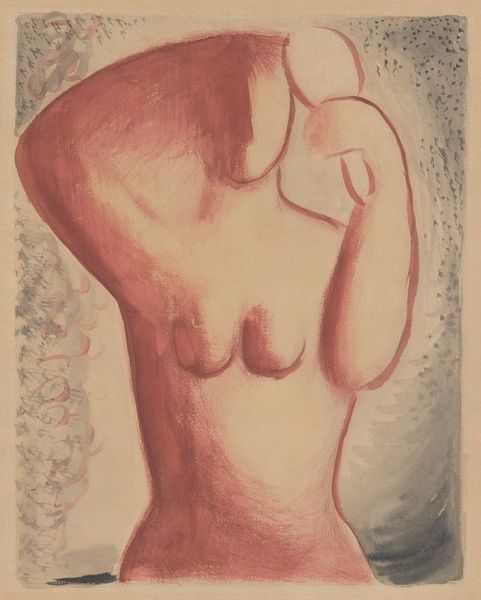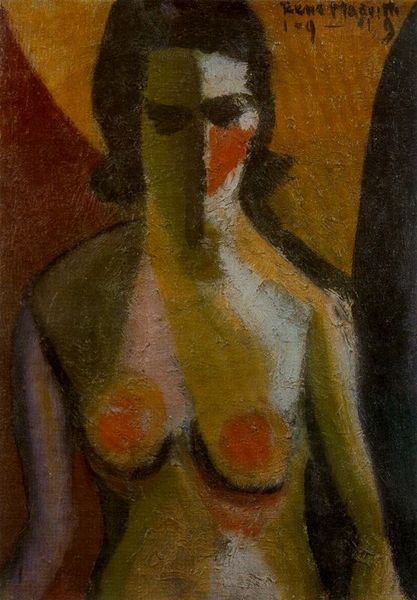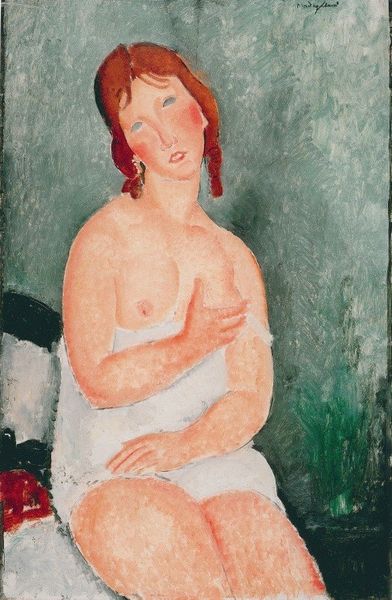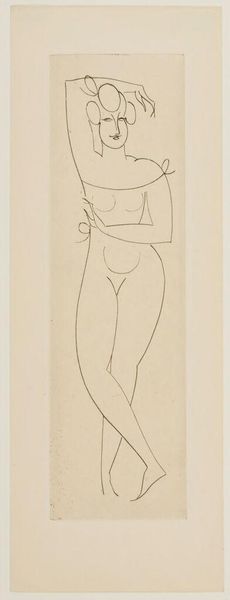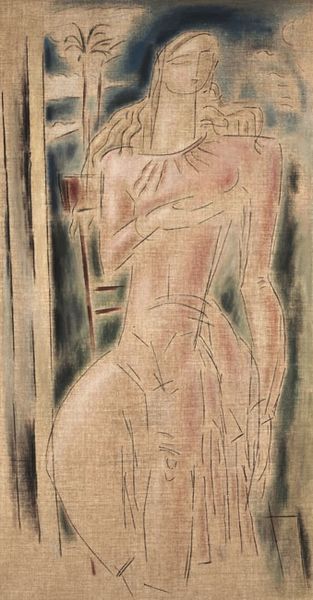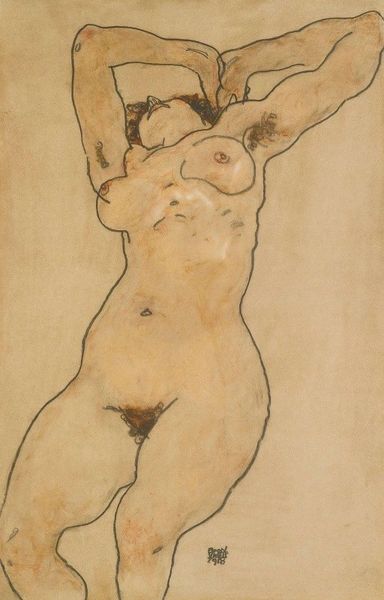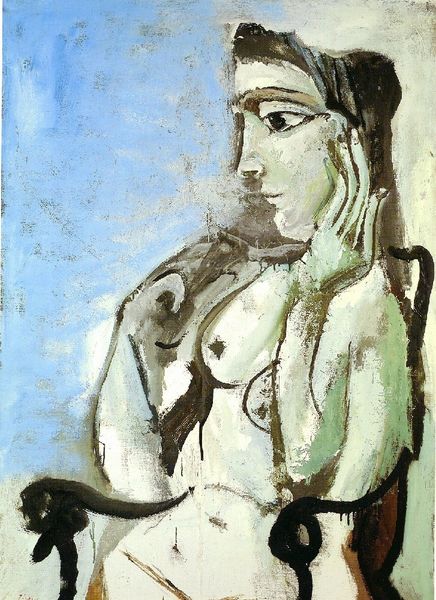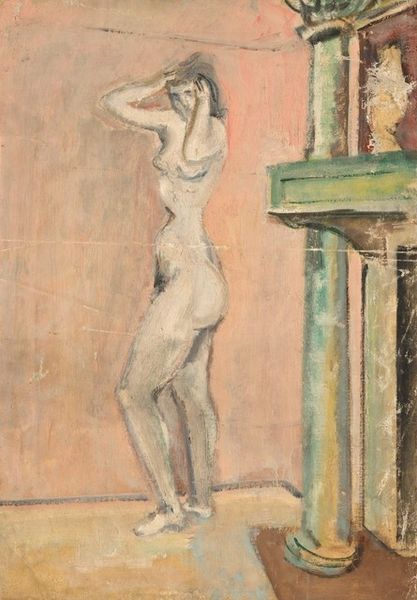
watercolor
#
portrait
#
figurative
#
figuration
#
form
#
watercolor
#
intimism
#
line
#
italian-renaissance
#
nude
#
modernism
#
watercolor
#
erotic-art
Copyright: Public Domain: Artvee
Editor: We’re looking at Modigliani’s "Cariatide", done with watercolor. I find the figure compelling – there’s a weightiness to her pose and the muted colors add a somber quality. How do you interpret this work in the context of art history? Curator: Modigliani’s "Cariatide," a watercolor sketch, offers a lens to examine the early 20th-century fascination with primitivism and its complex relationship to representing the female form. He pulls from classical art to depict a nude figure, her hands in an awkward position on her head like Atlas carrying the sky. Where have you encountered caryatids before? Editor: In Greek architecture, right? As structural supports. So, Modigliani is referencing classical forms. Curator: Exactly, but why this reinterpretation, stripped bare and imbued with this strange angularity? What kind of dialogue do you think he is setting up between the historical function of the caryatid – as a powerful support – and the vulnerability expressed in his figure's pose and features? And what effect might it have on the male gaze, then and now? Editor: That's an interesting contradiction... the subject almost appears frail in that posture but is supposed to communicate support and stability through artistic convention. It calls into question established societal roles assigned to men and women, maybe. Curator: It’s also important to consider the market. Erotic artwork at the time sought to explore form but often took inspiration from a variety of non-Western cultural norms and motifs that were not always well understood or used ethically, impacting our relationship with historical works in general. Modigliani uses these conventions with consideration for what will sell. Editor: It gives me a fresh perspective. Curator: Me too. Thank you!
Comments
No comments
Be the first to comment and join the conversation on the ultimate creative platform.
